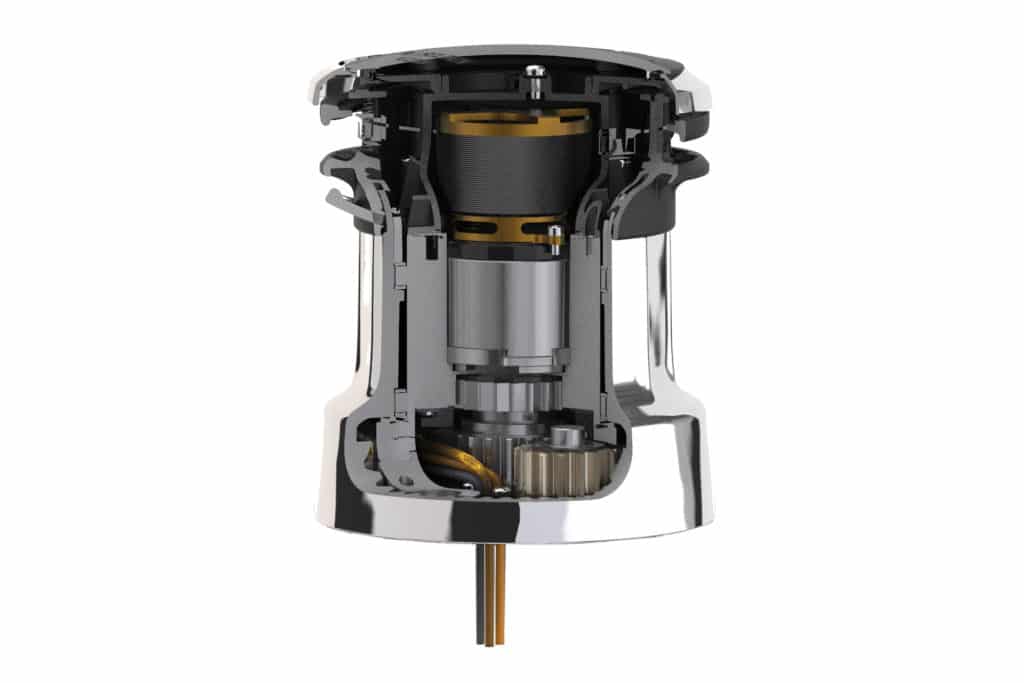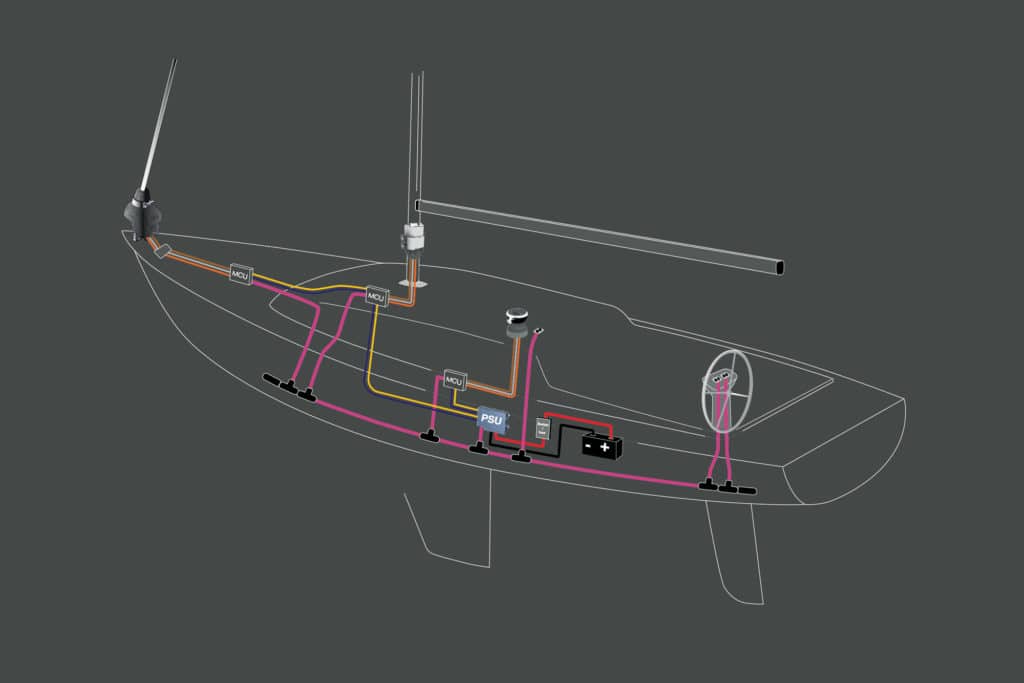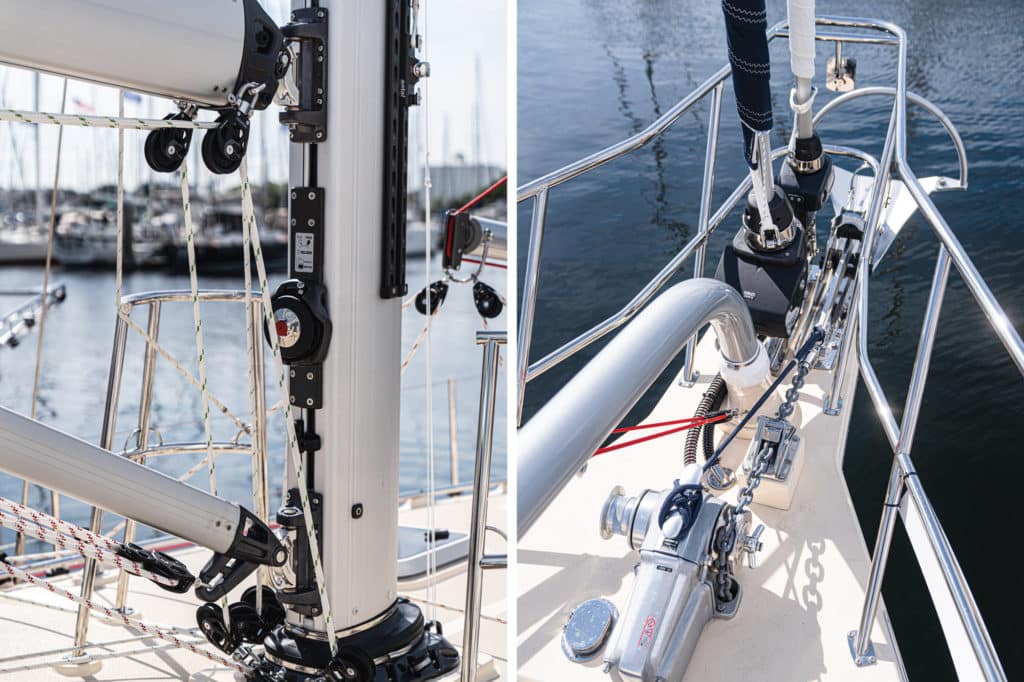
Sailors are forever watching out for promising new gear while also keeping a weather eye on risky leaps from technology that’s long been settled. During Cruising World’s 2021 Boat of the Year roadshow this past fall, we judges saw a couple of new proprietary systems that test that tension and promise new ways of using our boats, one of which comes from Seldén.
We were sailing the new Island Packet 439 off St. Petersburg, Florida, when we first set eyes and hands on its Synchronized Main Furling system. (For a review of the IP 439, see page 52.) This system is actually two separate products—each a stand-alone device worthy of its own attention—joined by one electronic brain. The first is an in-mast furling motor that Seldén’s designers created for either new mast installations or for retrofits of existing Seldén manual-furling mainsails. Check out the video “How to Upgrade a Furling Mast to Electric Drive” at the Seldén website (seldenmast.com) to see a retrofit in progress and determine whether your rig qualifies.
The other new product from Seldén is arguably more exciting and certainly more applicable to a wider population of boats. The E40i electric winch is a powered winch that incorporates the electric motor inside the winch drum. That means no motor belowdecks, no drive shaft passing through the deck, and none of the usual noise, space, and joinerwork problems those motors introduce in the installation.

Both the in-mast furling motor and the E40i winch are built around brushless electric motors that run at 42 volts. Why 42 volts? The “power formula” tells us that power (watts) equals electrical potential (volts) times electrical current (amps). For a given wattage, as volts go up, amps go down proportionally. The size of electric motors and the wiring to supply them are determined by their operating amperage. Stepping up the voltage by a factor of 3.5 in a 12-volt system means that the amperage goes down by the same factor—all of which allows for a powerful motor that’s small enough to fit inside the winch drum, and wire conductors of just 10-gauge AWG to power it.
And why didn’t Seldén go with a voltage that’s higher still? The American Boat and Yacht Council has long deemed direct-current voltage up to 50 volts “safe,” as in nonlethal (ABYC recently revised that safe limit to 60 volts DC). Seldén designed its system at 42 volts to stay well inside that safe threshold, even in the peaks.
Read More: Hands-On Sailor
The electronic brains behind both the furling motor and the winch are two separate components: a power-supply unit and a motor-control unit. Each about the size of a car stereo, these are installed belowdecks, typically under a berth or settee. The PSU takes in voltage from your boat’s house battery bank at either 12 or 24 volts, then converts it to 42 volts. The small 10-gauge wire runs from this PSU through the deck to the winch or furler; you’ll need larger-gauge wire from your house battery to the PSU. The MCU uses a proprietary SEL-Bus protocol that communicates through standard NMEA 2000 cable to deliver commands among switches, other Seldén components, and the winch or furler motor. A single PSU can supply multiple winches or furlers on a boat, but each individual winch or furler gets its own MCU. A boat that has a Furlex electric headsail furler, an in-mast furling motor and an E40i winch would have three MCUs but just one PSU.

The Seldén Synchronized Main Furling system, or SMF, comes into play on any boat with both the in-mast furling motor and the E40i winch installed. With the mainsail’s outhaul loaded on the E40i winch, the helmsperson simply pushes the furler’s “mainsail out” button. Four brief beeps sound in the winch to alert any inattentive crew that the winch is about to go to work. Then the E40i and the in-mast furler work together until the mainsail is drawn all the way out. Initially, the furler automatically tensions the mainsail on the furling drum, then starts rolling it out. When the main is out, the furler stops. If the MCU senses a load greater than 400 pounds, it stops both the winch and the furler automatically—long before damaging any sails or equipment. To roll the mainsail in—or reef it—you simply take the outhaul out of the teeth of the E40i winch and push the furler’s “mainsail in” button.
We appreciated the seamanlike redundancy that was built into this system. Seldén provides simple mechanical solutions for any failure in the electrical components. The in-mast furling motor comes with a clutch that can be disengaged easily; a winch handle in the furler’s line driver provides ample mechanical advantage to roll in the mainsail. Same goes for the Furlex headsail furler. The E40i does not accept a winch handle for manual operation. In the event of an electrical failure of that winch, Seldén recommends turning the line once around the E40i and running the tail to a nearby manual winch.
My partner and I aim to add a single E40i winch to the cabin top of our Passport 40 as part of our ongoing refit. We’d always wanted one powered winch in the cockpit but never wanted to add a noisy motor into the sleeping cabin below, one that would interrupt the cabin’s only bit of standing headroom.
Problem solved.
Veteran sailing writer Tim Murphy once again was an invaluable member of the judging panel for the 2021 Boat of the Year contest.








